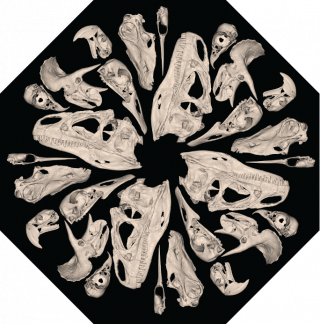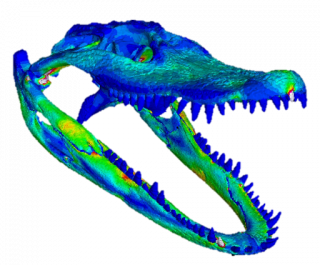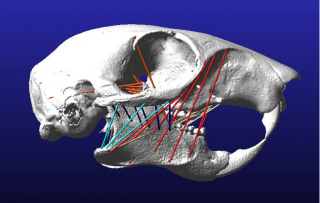Students will have access to the UCL Centre for Integrative Anatomy, the Grant Museum of Zoology, as well as benefit from our extensive collaborations with researchers across several disciplines.
Why study integrative anatomy at UCL?
UCL brings together scientists undertaking world-leading, interdisciplinary research to understand vertebrate anatomy, function and evolution. This allows us to reconstruct how fossil animals looked and behaved, understand the complex mechanisms that have driven biodiversity through time, and predict how organisms will respond to ongoing environmental changes. Medical and forensic research illuminates how humans grow and age, and the processes of disease and death. Students coming to UCL will have access to expertise and facilities within the UCL Centre for Integrative Anatomy, the unique collections of the Grant Museum of Zoology, as well as benefit from our extensive collaborations with researchers in Engineering, Anthropology and Earth Sciences.
Career prospects
Our researchers apply a wide range of techniques to explore anatomy at scales from the molecular to whole organism level. Students in Integrative Anatomy will gain quantitative skills (computer modelling, statistics) crucial for early career researchers in life and physical sciences, as well as expertise in medical imaging, 3D visualization, programming, dissection and lab techniques. Our students are highly competitive for PhD programmes and can pursue careers in academia as well as: biomedical research, science communication and administration, museum and heritage sectors, 3D imaging and modelling (including gaming and education industries), forensics and pathology, teaching, publishing companies, and civil service.
Topics covered
Our researchers and affiliates cover a wide range of topics including: anthropology and human evolution (Sandra Martelli); developmental and molecular mechanisms underpinning morphology (Yoshiyuki Yamamoto); biomechanical modelling and functional morphology (Phil Cox, Laura Porro); forensics (Wendy Birch); geometric morphometrics and shape analysis (Ryan Felice); palaeobiology and phylogenetic analysis (Susan Evans). All of our research is framed within an evolutionary context.
Students will work with our researchers to design a project within one of these topics.
Example available projects
- Feeding and biomechanical modelling of a mysterious fossil “amphibian”
- Osteon variation throughout the human body and its impact on age determination in human identification
- Developmental trade-offs during cavefish evolution
- Old bones, new tech: digitizing the treasures of the Grant Museum
- Determining locomotor mode of extinct amphibians
- The effects of food hardness on skull shape in pigs
- Comparative anatomy and function of salamanders
- Cranial anatomy of a giant fossil rodent
- Variation in skull bone structure and material properties
- Postnatal ontogeny of the temporal bone in humans
- Modification of Cis-regulatory elements in the cavefish genome
- Evolution of brain morphology in living and fossil dormice
- Descriptive anatomy of fossil reptile material
- Weasels in a warming world: the effects of climate change on skull shape evolution in mustelids
Integrative Anatomy taught modules
Please Note: There may be access to modules other than those provided in the following lists. However, all optional modules must have the approval of the subject stream tutor. Some modules may be appropriate for more than one subject stream. You can view further information about the modules in the Module Catalogue.
 Close
Close






